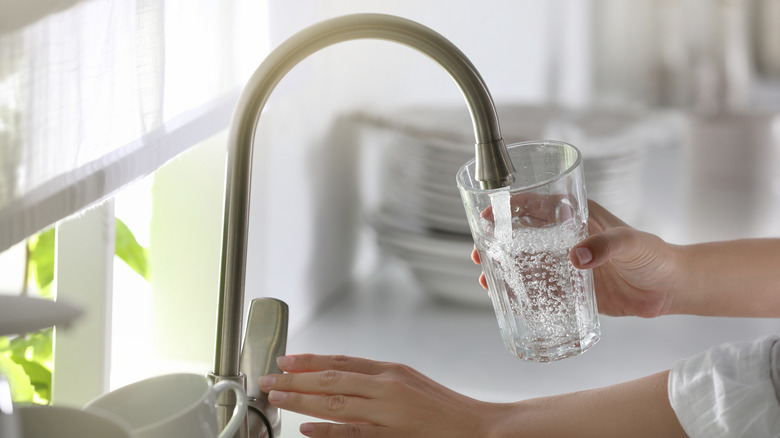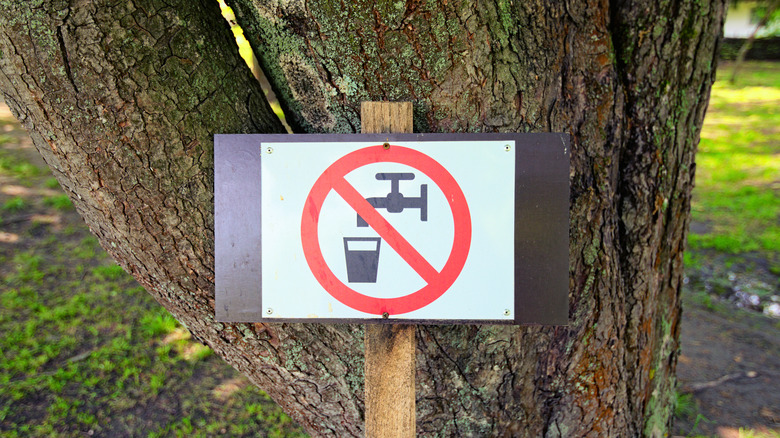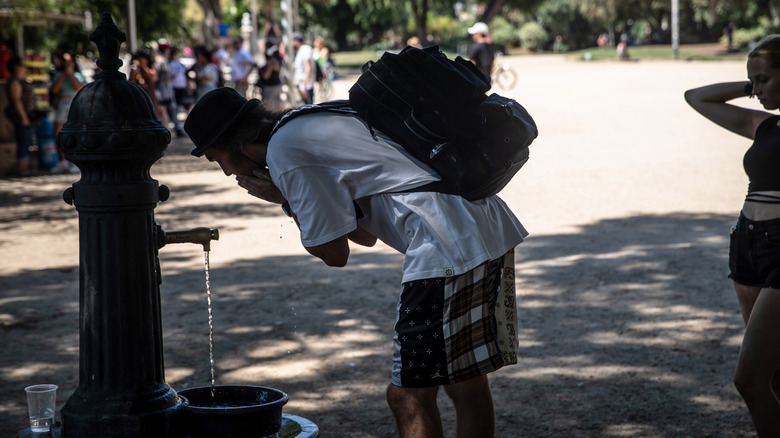How To Know Whether You Can Drink The Tap Water In A Foreign Country
There's nothing like a long drink of cold water after a hot day of sightseeing. But, there's also nothing quite like spending the next two days confined to the bathroom during your dream trip. Get comfortable, because we're talking about traveler's diarrhea.
The most common cause of traveler's diarrhea, according to Mayo Clinic, is ingesting contaminated water and food. Diarrhea fear, understandably, is a huge reason why many travelers avoid drinking tap water while abroad. And, as the CDC states, it's not just drinking the water that might get you sick. Using tap water abroad for cooking, making ice, or even brushing your teeth can also cause your belly to start gurgling. But do you really need to rely on bottled water as soon as you leave the States? It depends, both on where you're going and a little bit on who you are. Let's start with the bad news.
Where not to drink the tap water
Almost all advisory boards, including Johns Hopkins, agree that you should avoid drinking tap water in countries that have poor sanitation. The CDC writes that people are at the highest risk of traveler's diarrhea in Africa, the Middle East, Mexico, Central and South America, and most countries in Asia. Mayo Clinic adds Eastern Europe to that list. When visiting these regions, it's best to avoid tap water as far as possible.
The good news is that bottled water is widely available the world over. The bad news is that plastic bottles are terrible for the environment. So what can you do? The CDC recommends a variety of methods to purify tap water, including boiling, filtering, and disinfection. The easiest method for travelers is using a small, portable filter that you can put on a reusable drinking bottle; Worldly Adventurer has a list of reasonably priced options. You can save your stomach and the world. What's not to love?
Where can you drink tap water abroad?
Green Tumble has a list of ten countries that have some of the highest quality tap water in the world. Perhaps unsurprisingly, they are all in Northern and Western Europe. Their picks include Switzerland and Iceland, where much of the water is of such high quality that it doesn't need treating. But there are many more places where you can try the tap water. The CDC singles out Japan and South Korea as two Asian countries that have high-quality drinking water, and Good To Go Insurance states that water in EU member states, Canada, Australia, and New Zealand is chug-ready, straight from the tap.
However, you shouldn't take this as blanket advice. Fitfortravel recommends that vulnerable groups, such as the elderly or pregnant people, should be especially cautious about what they ingest while traveling. The CDC also warns that travelers in remote areas in any country should be wary about consuming the water. That means the water in London is a yes, while the water straight from a well in the Scottish Highlands should inspire a little caution.


